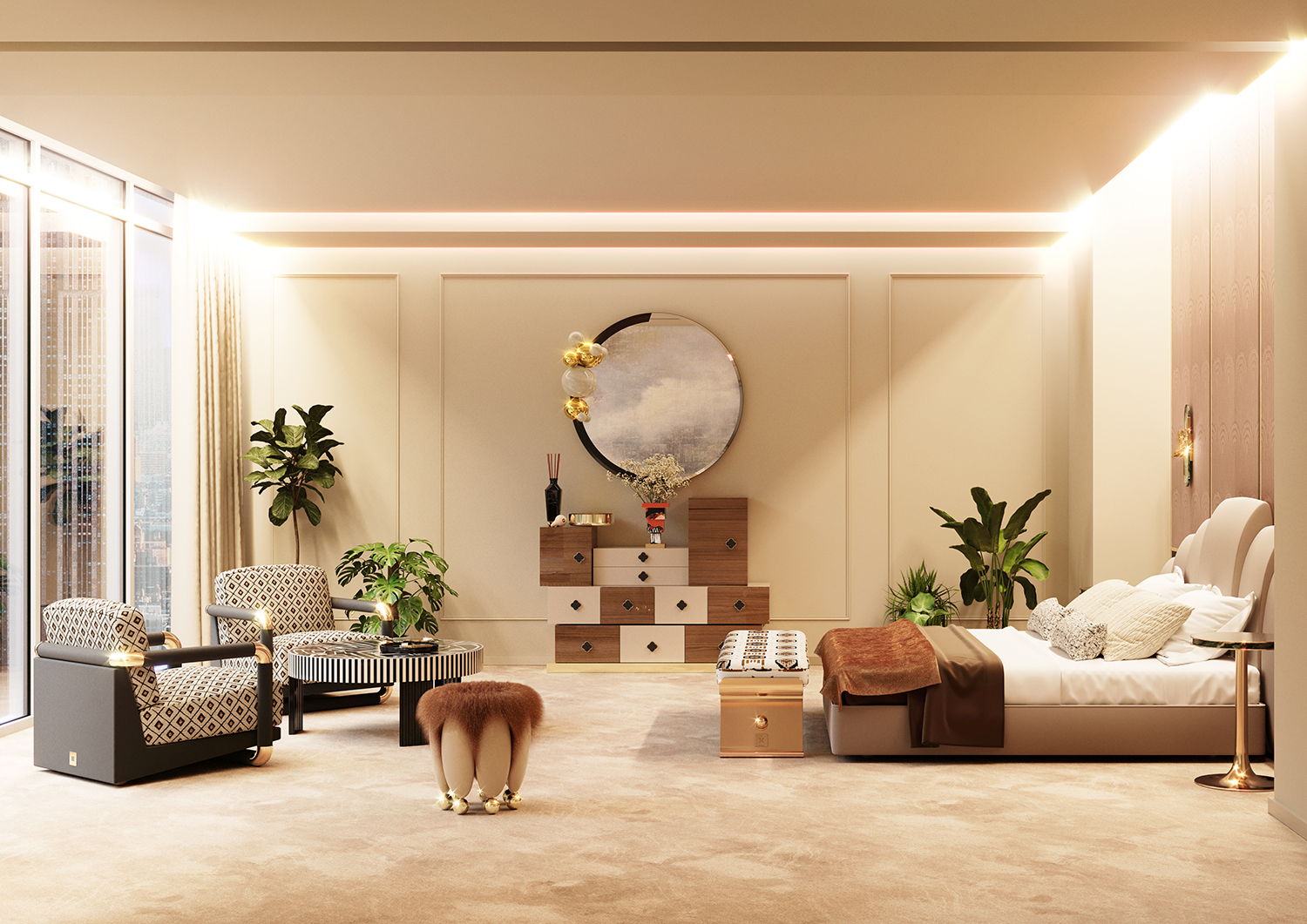Get expert miami interior design for high-end home and office interiors.
Get expert miami interior design for high-end home and office interiors.
Blog Article
Transform Your Home With Necessary Principles of Interior Layout and Appearances
By comprehending the effect of color theory and the value of texture and patterns, one can develop spaces that are not only aesthetically enticing but additionally deeply personal. Attaining this equilibrium includes even more than plain decoration; it incorporates a strategic plan and a keen understanding of just how each element interacts within a room.
Understanding Color Theory
Shade theory is an essential facet of indoor layout that substantially influences state of mind, assumption, and total visual. Understanding the principles of shade concept permits developers to develop rooms that resonate emotionally with residents while meeting useful needs (miami luxury interior design). Colors can be categorized into three primary types: key, secondary, and tertiary. Each category plays an important function in establishing harmony within a room.
The mental impact of shades is profound; warm colors such as reds and oranges stimulate power and warmth, while awesome tones like blues and environment-friendlies promote peace and harmony. The use of corresponding colors enhances aesthetic passion, producing striking contrasts that can boost a space's appeal.
Neutral shades, on the various other hand, function as a versatile background, enabling various other style aspects to shine. It is vital to take into consideration aspects such as illumination and the area's function when picking a color combination, as these can change the perception of colors throughout the day.
Inevitably, a well-considered color pattern can change a room, fostering a sense of convenience and style that lines up with the occupants' preferences. Mastery of shade concept is, for that reason, a vital skill for any kind of interior designer intending to create unified and inviting environments.
Accomplishing Equilibrium in Style
Exactly how can designers accomplish a sense of stability in their spaces? Achieving balance in design is basic to developing harmonious interiors.
Asymmetrical balance, on the various other hand, depends on varying elements that still achieve a cohesive appearance. This strategy enables even more dynamic and informal arrangements, providing passion while keeping stability. By thoroughly selecting differing dimensions, colors, and textures, designers can create a visually engaging area that feels well balanced yet energised.
Radial equilibrium highlights a main prime focus with aspects radiating outside. This style is typically seen in round designs, where furniture and decoration produce a cohesive border that attracts the eye internal.
Inevitably, achieving equilibrium needs thoughtful factor to consider of range, percentage, and the connections between elements. interior design firms. By masterfully applying these balance principles, developers can transform areas right into atmospheres that really feel both cosmetically pleasing and functionally unified, boosting the general experience for owners
Value of Spatial Awareness

A keen sense of spatial awareness permits developers to recognize focal factors within an area, guiding the customer's focus to essential attributes while maintaining an overall sense of unity. It also aids in the strategic placement of lighting, which can dramatically influence the perception of room and mood. Comprehending spatial connections enables the developer to provide to the details demands of occupants, guaranteeing that each area offers its desired objective without jeopardizing aesthetic appeals.
Ultimately, spatial recognition is critical for optimizing the possibility of any indoor room. By very carefully thinking about the interaction between measurements, design, and feature, designers can develop atmospheres that not only fulfill useful requirements however also stimulate a sense of comfort and elegance, enhancing the general living experience.
Incorporating Appearance and Patterns
Embracing a diverse variety of structures and patterns can considerably boost the visual and responsive charm of an indoor space. The tactical usage of numerous products-- such as wood, steel, material, and stone-- here are the findings develops deepness and rate of interest, making an area feel much more welcoming and dynamic. Integrating smooth surface areas with harsh textures can establish an equilibrium that attracts the eye and involves the senses.
When page incorporating patterns, take into consideration both range and repetition. Large patterns can offer as focal factors, while smaller sized, subtle designs can complement other elements without overwhelming the area. Layering patterns, such as pairing floral pillows with striped throws, includes complexity and a sense of harmony if performed thoughtfully.
It is likewise important to preserve a natural shade combination, ensuring that appearances and patterns interact as opposed to complete for interest. By selecting a few vital appearances and patterns, you can create an unified visual that reflects your personal style while enhancing the total atmosphere of the room. Inevitably, the careful incorporation of these aspects can transform an ordinary space right into an advanced environment rich with character and heat.
Personalizing Your Area
Creating a space that mirrors your character is essential to accomplishing an absolutely inviting atmosphere. Customization in interior layout allows you to infuse your one-of-a-kind design and rate of interests right into your home, changing it from a plain sanctuary into a haven that speaks to who you are. Begin by picking a shade palette that resonates with your emotions-- vibrant more tips here shades can stimulate, while soft tones supply serenity.
Include art work and style that reflect your enthusiasms, whether it be traveling, nature, or abstract principles. Presenting personal collections, such as publications, photographs, or souvenirs, can evoke treasured memories and produce prime focus within a room. Furthermore, consider customizing functional pieces, like upholstered furniture, to align with your visual choices.

Conclusion
In final thought, the change of a home via the important concepts of interior layout and looks requires a comprehensive understanding of shade theory, equilibrium, spatial understanding, appearance, and personalization. Each element adds considerably to creating a harmonious and functional living atmosphere - miami luxury interior design. By thoughtfully incorporating these principles, people can improve the aesthetic appeal and emotional resonance of their areas, ultimately fostering a home that reflects special identities while giving convenience and usefulness
Report this page